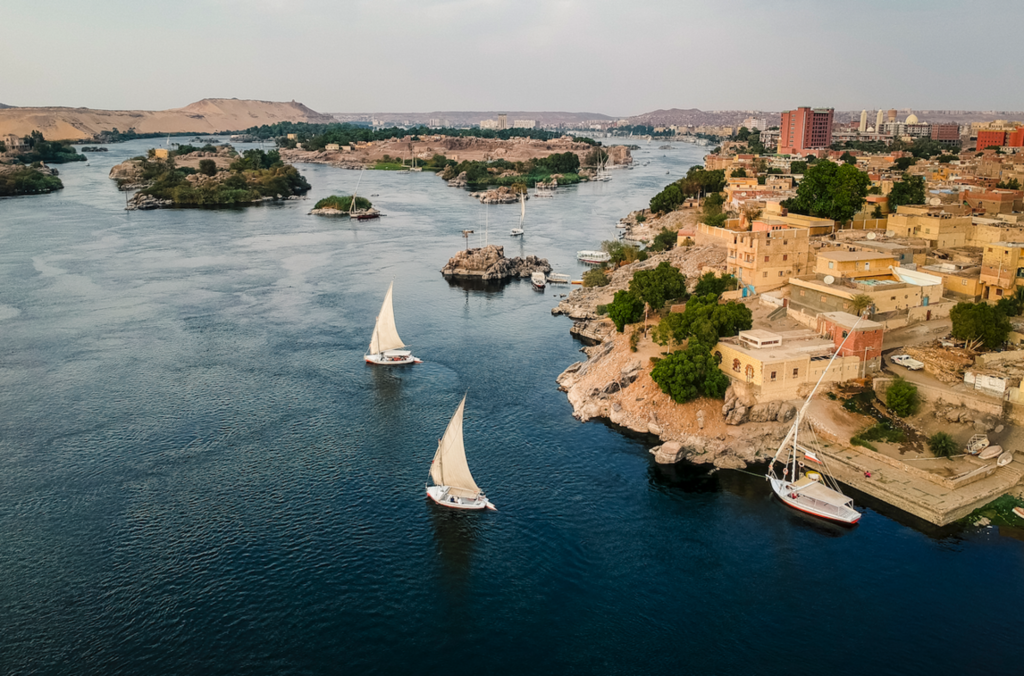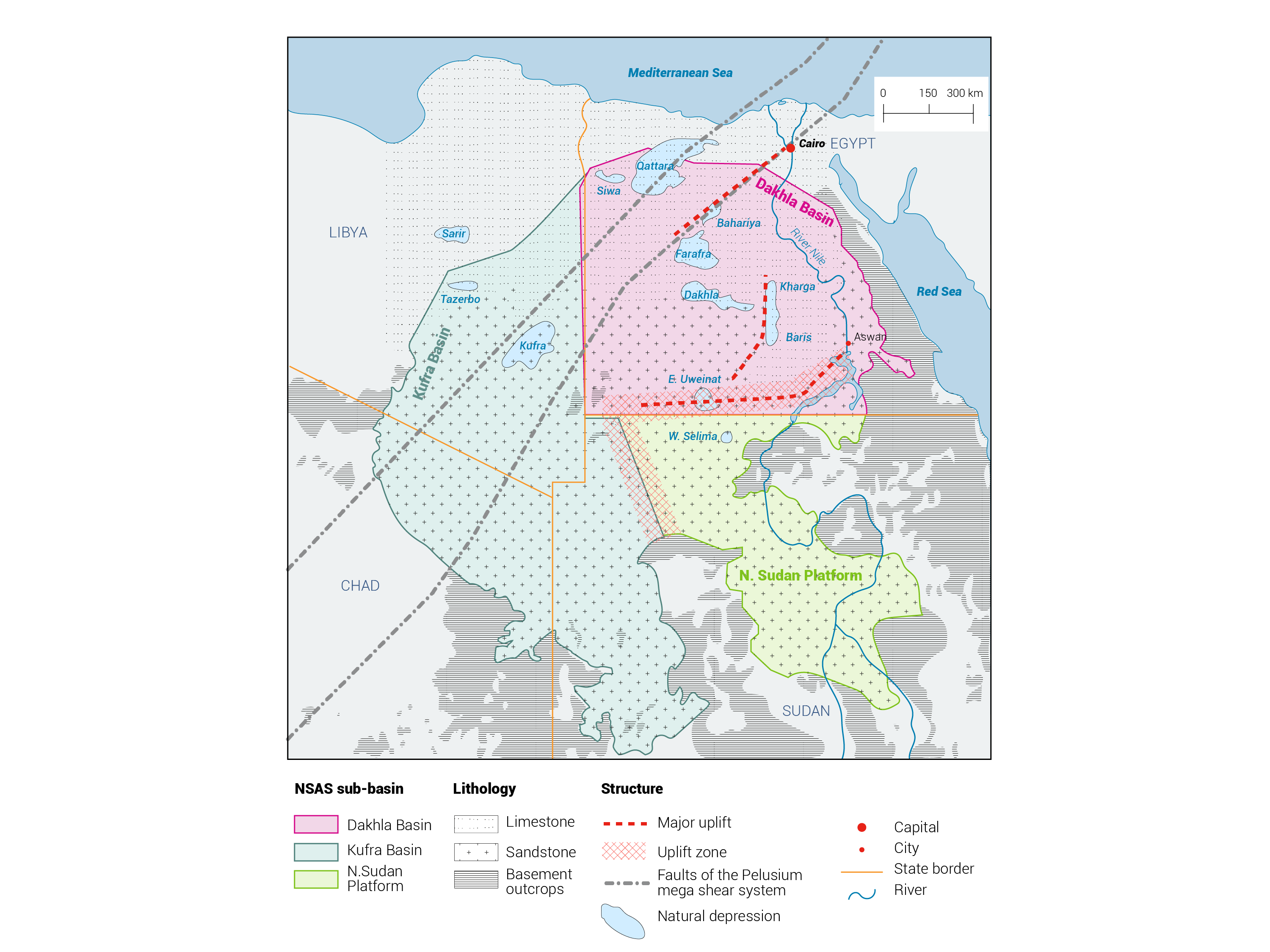
The international component is critical in Egypt’s water management because the majority of the country’s water resources originate beyond its borders.
Shared surface water resources
The Nile’s headwaters are in Rwanda’s Nyungwe Forest. The river then runs into Lake Victoria and empties into the Mediterranean Sea 6,600 kilometres to the north, making it one of the world’s longest rivers. The basin is 3.2 million km2 in size, nearly 10% of the area of Africa, and supports the livelihoods of over 200 million people.
The Nile is shared by nine countries besides Egypt. Each has unique requirements and goals but also common concerns such as rising water demand, environmental degradation, recurring floods and droughts, and energy instability. The nine countries are Burundi, Tanzania, Rwanda, Democratic Republic of the Congo, Kenya, Uganda, Sudan, Ethiopia and South Sudan. The White Nile, Blue Nile and Atbara are the three primary tributaries.[1]
Shared groundwater resources
The Nubian Sandstone Aquifer System (NSAS), shared by Chad, Egypt, Libya and Sudan, is the world’s biggest ‘fossil’ groundwater aquifer, covering around 2 million km2. Its large freshwater reserves can meet the countries’ rising water demands. The aquifer is mostly composed of hard ferruginous sandstone with extensive shale and clay intercalation, with a thickness ranging from 140-230 metres. The type of groundwater varies from fresh to somewhat brackish (salinity ranges from 240-1,300 ppm). However, because its water is ancient and non-renewable, the aquifer faces over-abstraction and eventual depletion if not carefully managed.
Figure 1. The Nubian Sandstone Aquifer System’s riparian states and land area above the system (%).
Chad, Egypt, Libya and Sudan ratified a regional agreement (Strategic Action Programme) for coordinated management of the shared aquifer in 2013. The programme lays the foundation for agreed-upon community activities to manage the aquifer. It highlights the essential legal, policy and institutional reforms at both the regional and national levels to address the primary transboundary challenges harming the aquifer and their core causes. However, this agreement has not been completely implemented due to the civil war in Libya [2].
Treaties and agreements
The Nile has been the subject of numerous treaties and agreements over the years. Today, the distribution of Nile water is governed by the Nile Waters Treaty, a bilateral agreement between Egypt and Sudan that was signed in November 1959. This allocated 55.5 BCM/yr to Egypt. However, in recent years, Sudan has begun filling the GERD, which appears to have resulted in a decline in Egypt’s share of Nile water.
Table 1. Main agreements between Egypt and other Nile Basin countries.
| Year | Involved countries | Main items |
| 1929 | Egypt and Britain (representing Sudan, Kenya, Tanzania and Uganda) | No works to be undertaken on the Nile that would reduce the volume of Nile water reaching Egypt. |
| 1959 | Egypt and Sudan | Utilization of Nile water after construction of the Aswan High Dam to be shared by Egypt (55.5 BCM/yr) and Sudan (18.5 BCM/yr). Establishment of the Permanent Joint Technical Commission for Nile Water to enhance the technical cooperation between both countries and Nile Basin countries. |
| 1993 | Egypt and Ethiopia | Neither country should embark on any works on the Nile that could harm and affect other countries; consultation and cooperation between both countries for the utilization of Nile water, increase water flow and reduce losses. |
| 2015 | Egypt, Ethiopia and Sudan | The countries committed to cooperating based on common understanding, mutual benefit, good faith, win-win and principles of international law to settle any dispute regarding the GERD. |

